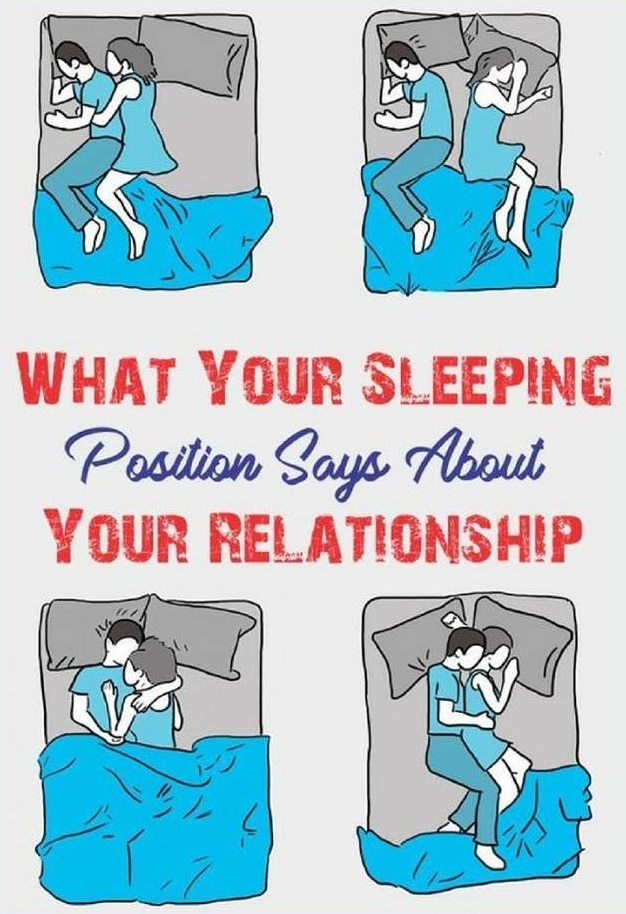Believe it or not, the way you and your partner sleep together can reveal some surprising truths about your relationship. While sleep is often thought of as a time for the body to rest and recharge, it’s also when the subconscious mind takes over, allowing deeply rooted emotions and feelings to come to the surface—often in ways we don’t even realize.

By the time someone reaches the age of 75, they’ll have spent nearly 25 years asleep, which is about one-third of their life. That’s a long time for the unconscious mind to express itself. When you’re asleep, your brain isn’t following the same social rules or filters that guide your daytime actions. You’re not trying to impress anyone or protect your feelings—you’re just being. So, when you share a bed with your significant other, the positions you naturally fall into can speak volumes about the emotional connection you share. For instance, if one partner sleeps on their back while the other rests their head on their chest, it often signals a strong emotional bond.
The person on their back typically projects confidence and security, providing a protective presence. Meanwhile, the one using their chest as a pillow is likely seeking comfort, trust, and emotional safety. This sleeping position is especially common in new relationships or during periods of emotional reconnection, reflecting a mix of vulnerability and affection. Sleeping face-to-face is another intimate position that signifies a deep emotional link. It shows a desire to remain emotionally close, even in sleep. When a partner who doesn’t normally sleep this way suddenly starts facing you, it might mean they’re feeling emotionally disconnected and are craving closeness or reassurance. If they move even closer—touching hips or pressing against you—it can suggest a longing for both emotional and physical intimacy.
Another popular sleeping position among couples is spooning, where one partner cuddles up behind the other. Around one in five couples prefer this position, and it’s known for providing feelings of warmth, security, and physical closeness. The partner on the outside, often referred to as the “big spoon,” typically takes on a more protective or nurturing role, while the “little spoon” is in a more vulnerable, comfort-seeking position. This pose requires trust, emotional safety, and a strong bond, making it a favorite for couples who feel especially connected. On the flip side, there’s the knotted-up position—where couples sleep completely entangled, arms and legs wrapped tightly around one another.
@anvihan What’s sleeping position with your partner says about your relationship #couple #spooning #sleepingposition #sleep #couplerelationship ♬ original sound – Anna Daghash
While this might seem incredibly romantic, it could be a sign of codependency or a lack of personal boundaries. That said, couples who start off the night in this position but gradually drift apart as they fall into deeper sleep usually have the healthiest relationships. It shows they’re capable of expressing closeness without losing their sense of individuality. Then there’s the back-to-back sleeping position, where both partners face away from each other. Although this might look like emotional distance, it’s actually one of the most common and healthy sleep positions for long-term relationships. It often means the couple is comfortable, secure, and doesn’t feel the need to constantly express affection physically. Light contact—like a touch of the hand or a brush of the back—can still show deep affection and trust without overwhelming physical closeness. In the end, sleeping positions may seem like small, insignificant habits, but they can offer real insight into your emotional bond. Every couple is unique, and there’s no one right way to sleep together. However, paying attention to the way you and your partner naturally align at night could uncover unspoken truths about your relationship. Whether it’s closeness, protection, independence, or trust, your body language during sleep may be narrating a silent love story you didn’t even know you were telling.




